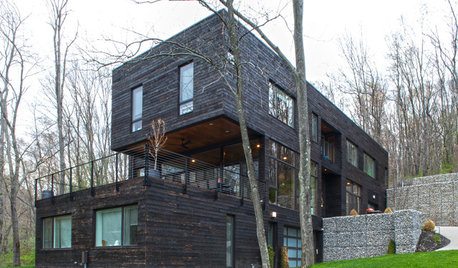arc fault breaker not tripping when wires are burnt in bedroom
fsimo63
12 years ago
Related Stories

MOVINGHome-Buying Checklist: 20 Things to Consider Beyond the Inspection
Quality of life is just as important as construction quality. Learn what to look for at open houses to ensure comfort in your new home
Full Story
CONTRACTOR TIPSBuilding Permits: 10 Critical Code Requirements for Every Project
In Part 3 of our series examining the building permit process, we highlight 10 code requirements you should never ignore
Full Story
BATHROOM DESIGNWarm Up Your Bathroom With Heated Floors
If your bathroom floor is leaving you cold, try warming up to an electric heating system
Full Story
BATHROOM DESIGNKey Measurements to Help You Design a Powder Room
Clearances, codes and coordination are critical in small spaces such as a powder room. Here’s what you should know
Full Story
HOUZZ TOURSMy Houzz: Modernism Takes a Natural Turn in Pennsylvania
Generous wood throughout and woodsy sights outdoors soften and warm this home’s modern lines
Full Story
GREAT HOME PROJECTSPower to the People: Outlets Right Where You Want Them
No more crawling and craning. With outlets in furniture, drawers and cabinets, access to power has never been easier
Full Story
BATHROOM DESIGN10 Amenities to Make Your Bathroom Extraordinary
Go beyond the basics for a luxury bathroom experience, with extra-special options starting at only $25
Full Story
GREEN BUILDINGWhy You Might Want to Build a House of Straw
Straw bales are cheap, easy to find and DIY-friendly. Get the basics on building with this renewable, ecofriendly material
Full StoryMore Discussions








brickeyee
Billl
Related Professionals
Bon Air General Contractors · Chillicothe General Contractors · Jeffersonville General Contractors · Norwell General Contractors · Riverside General Contractors · Sheboygan General Contractors · Avenal General Contractors · Benicia Solar Energy Systems · Easton Solar Energy Systems · Algonquin Home Automation & Home Media · Burlingame Home Automation & Home Media · Garden Grove Home Automation & Home Media · Goulds Home Automation & Home Media · Hull Home Automation & Home Media · West Palm Beach Home Automation & Home Mediatheboneskes
Ron Natalie
fixizin
enigma_2
Ron Natalie